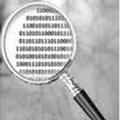Cited By
View all- Mahaveerakannan RVelmurugan SVijaya Bhaskar SJothi Chitra RKareem ZSakthidasan Sankaran KVenkatesh Kanna TChweya R(2022)HGKMSecurity and Communication Networks10.1155/2022/60003752022Online publication date: 1-Jan-2022
- Sanober SGoyal DKeshari SArslan FDugbakie B(2022)Secure Wireless Networks Based on Fuzzy Logic for Smart HVAC Systems in Small-Scale IndustriesSecurity and Communication Networks10.1155/2022/36599612022Online publication date: 1-Jan-2022
- Wu XWei DVasgi BOleiwi ABangare SAsenso E(2022)Research on Network Security Situational Awareness Based on Crawler AlgorithmSecurity and Communication Networks10.1155/2022/36391742022Online publication date: 1-Jan-2022


